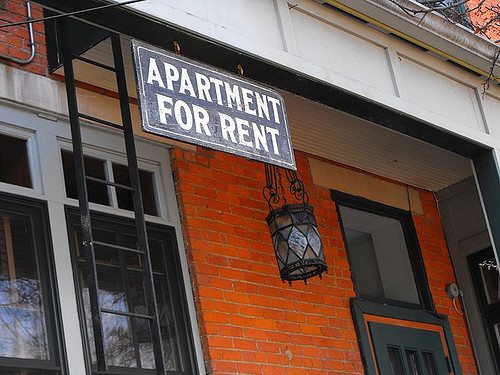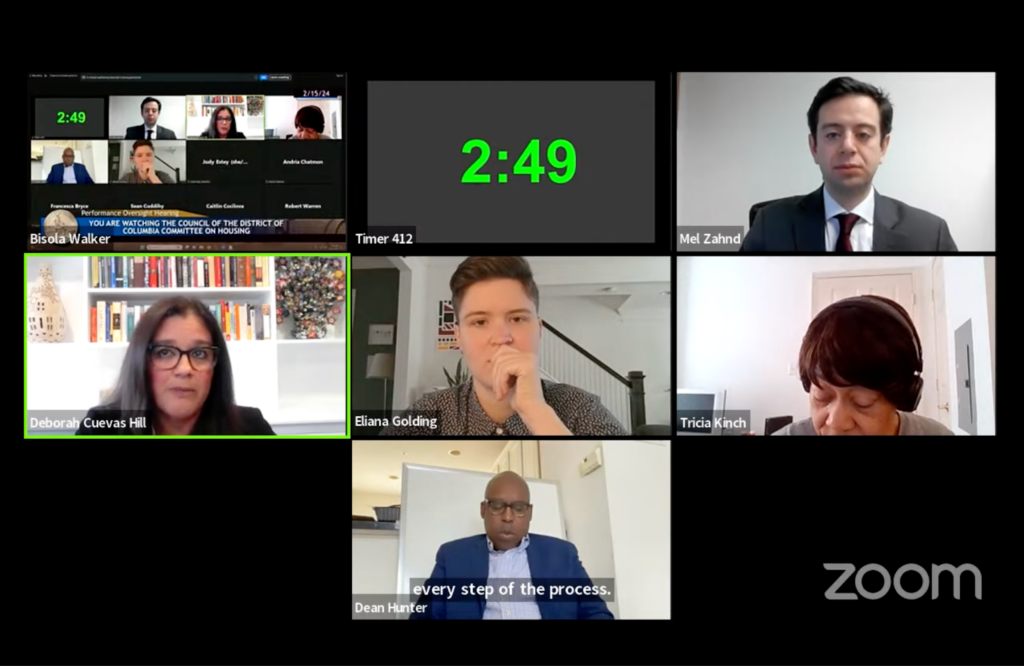The final vote on the District’s Fiscal Year 2018 budget cut funds for the Emergency Rental Assistance Program by $2 million — a 21 percent reduction from Fiscal Year 2017. This is $750,000 less than the cut proposed by Mayor Bowser, but ERAP’s insufficient funding has been an issue since the program started in 2007. Although D.C. Council has approved more funding for the Homelessness Prevention Program that began in 2015, this should not be seen as an alternative to emergency rental assistance, according to Max Tipping of the Washington Legal Clinic for the Homeless.
ERAP is funded by the Department of Human Services to aid low-income and homeless individuals and families in emergency housing situations. The program will pay up to $4,250 for five months of overdue rent and up to $900 for a security deposit or first month’s rent on a new unit. ERAP will only provide the money if the client has a payment plan in place to cover the rest of the security deposit or the rent. Assistance to an individual or family can be provided only once in a 12-month period.
A few hundred people call The Salvation Army each month requesting ERAP, according to JaNese Simon, program manager for the organization’s Emergency Assistance and Homeless Outreach Program. However, each of the organization’s two locations that offer emergency assistance has only one case manager who sees 30 to 40 clients per month. The Salvation Army is one of the six non-profit agencies that receive an annual grant from the DHS each October and is usually spent by the following September, according to Simon.According to Dora Taylor-Lowe of the Department of Human Services, DHS is looking into revising ERAP’s regulations to allow more funding to be given to each applicant, but this would require a change in the current legislation. During FY2016, two of the six ERAP providers could not sustain funding and ran out two months early. DHS also stated that from FY 2011 to FY2016, ERAP received a total of 24,990 applications and of that, 15,7171 were approved.
When funds run out, each ERAP agency can call other nonprofits and churches, and can occasionally use a limited amount of internal funding to help the client. If those funds are not available, or there are simply too many people in need, the client must apply for additional rental assistance elsewhere.
Similarly, Tomeka Seaborn said that out of the 120 to 140 calls she receives per month, 80 percent get approved for ERAP. Seaborn is the program manager at the Virginia Williams Family Resource Center, one of the largest ERAP providers under The Community Partnership for the Prevention of Homelessness. There are two case managers to work with each ERAP client. For those eligible that cannot get the funding from ERAP, Community Partnership can refer a client to any of the four nonprofits who offer emergency assistance under the Department of Human Services Homelessness Prevention Program.
ERAP clients face the difficulty of finding payment for what these agencies cannot cover. If the client needs more than the $900 ERAP can provide to cover a security deposit or first month’s rent, then the client must come up with the rest of the money on their own. If within 60 days they cannot come up with the funds or their request for a payment plan is denied by their landlord, then they receive no funding and ERAP closes the case.
There has not been an increase in the amount of funds an ERAP provider is allowed to provide to a client since the program’s birth in 2007, despite an overall increase in rent. According to the National Low Income Housing Coalition, the fair market rent for a 1-bedroom apartment in D.C. is $1,513 and $1,746 for a 2-bedroom. Assuming one is spending no more than 30 percent of their income on rent, annual income needed to afford the fair market rent for one-bedroom and 2-bedroom apartments would be $60,520 a year and $69,840 a year respectively.
“That amount of money is not enough to help people who have housing subsidies, who are very low-income, who don’t have the means to get the money to pay for that,” said an official at Legal Aid Society of D.C. about ERAP’s $900 limit. “Clients who have vouchers, are disabled and are not working do not have the time or the extra income.”
Sasha Williams, a Street Sense vendor, has been trying to secure a home in a safe neighborhood since she left D.C. General family shelter in 2015. In April, she found an available 2-bedroom unit in Northeast for her, her 4-year-old daughter and her baby due in September. Like many in need of rental emergency assistance, Williams has been working within the time frame of the housing choice voucher, which expires every couple of months. Catholic Charities, one of the six ERAP providers, covered the security deposit for her new apartment. However, ERAP would not cover the $75 application fee or the $600 convenience fee so she had to receive additional assistance from a church. While Williams waits for the D.C. Housing Authority to inspect the unit and for her housing assistance application to be approved, there is still a possibility the unit she found can be rented to someone else, which would mean starting the process over again.
“It can get frustrating and depressing going through all this red tape,” Williams said, referring to the various additional fees renting an apartment can come with. “It’s confusing. I don’t know if I’m being turned down, discriminated against, I don’t know the whole process. Communication needs to be better. People just deserve to have housing.”
D.C. Housing Authority, ERAP providers, and landlords seem to make it exceptionally hard for homeless and at-risk individuals and families to receive housing. Many of these individuals cannot afford to wait a month or two months for rental assistance just to have their case ultimately dropped. At-risk and homeless families cannot afford to pay refundable and nonrefundable fees such as “reservation fees,” “convenience fees,” or even expensive application fees that ERAP does not cover.
Ken Martin, another Street Sense vendor who has been homeless off and on since 2009, found a 1-bedroom apartment in Adams Morgan in early May. Martin had spent 14 years on the D.C. Housing Authority’s Section Eight housing voucher waitlist. Despite his history of three heart attacks and seven heart-related surgeries, Martin said the housing authority continued to neglect assisting him in finding a place to live and his DCHA housing navigator never reached out to him.
“All these people were working to have me housed by Father’s Day to spend the day with my kids and it didn’t happen,” Martin said. “My housing navigator was not held accountable for not doing their job…some helping professionals just are not concerned that people are dying.”
While he waited, he lived in a friend’s basement paying rent and storage fees. Martin went through the ERAP provider Housing Counseling Services, who agreed to cover $900 security deposit if the rest of the deposit, $1,798 could be provided through another agency. The $45 application fee and $100 reservation fee were not covered by ERAP and had to be provided by Martin.
In cutting funds for ERAP, the city is losing a unique service that cannot be provided through the Homeless Prevention Program on its own. The Homeless Prevention Program offers rental assistance only to families who are referred from the Virginia Williams Family Resource Center. Its four nonprofits mostly provide financial and counseling assistance, though help with back rent is possible on a case-by case basis.
“I think HPP is a very positive thing,” Tipping wrote in an e-mail to Street Sense, “but I don’t understand why we should take funds away from ERAP in order to keep scaling up HPP.”
ERAP can also help single individuals and regularly covers up to four months of back rent payments. In special cases for households with seven or more children or for a person with a disability, an ERAP provider can pay up to $6,000 in overdue rent.
“I think it is possible for HPP funds to help keep folks in housing,” Tipping said. “But in general, I don’t think that program is catching people early on in the eviction process in the same way that ERAP does right now.”
A core component to Mayor Bowser’s vision to end homelessness in D.C. by 2020 is that “better coordination of mainstream anti-poverty programs is critical to create a stronger safety net and to prevent individuals and families from losing their housing in the first place.”
However, further cuts to already underfunded emergency rental assistance leave people at risk of becoming homeless with few options.
Correction (7/20/2017)
This article has been updated to reflect program and agency names that were previously mislabeled. The Homelessness Prevention Program had been referred to as the now-defunct Homelessness Prevention and Rapid Re-Housing Program. And the Homelessness Prevention Program is administered by the Department of Human Services, not the Department of Housing and Community Development.










